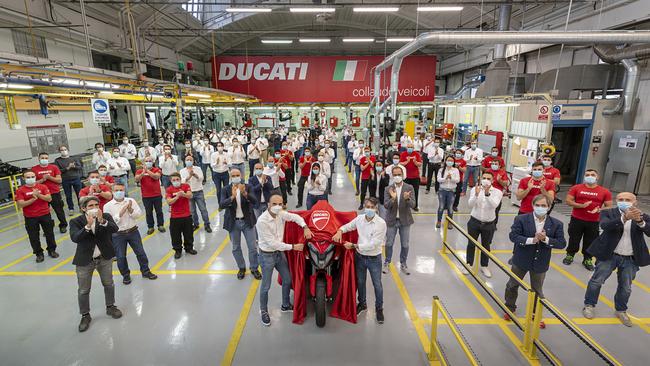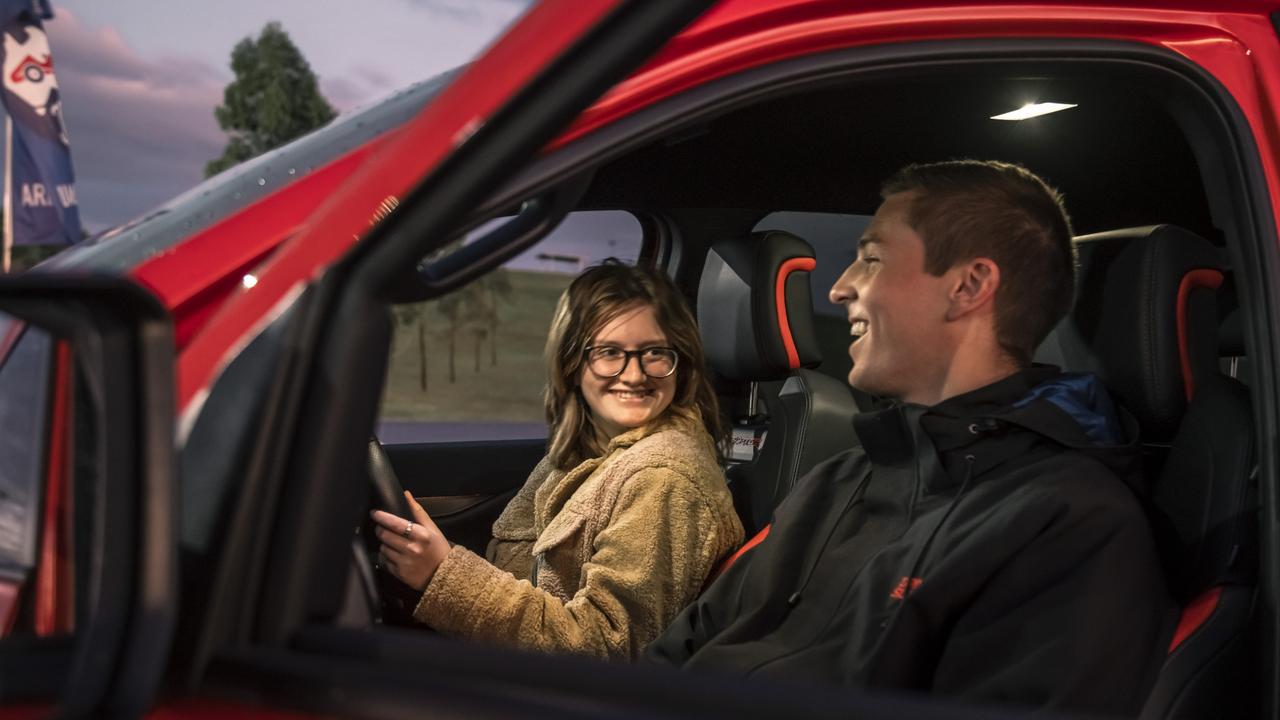Why the new radar-guided Ducati is a game-changer for riders
Ducati has revealed its next-generation bike will come equipped with new radars — an industry game changer that will help save lives on the road.

Motoring News
Don't miss out on the headlines from Motoring News. Followed categories will be added to My News.
Motorcycle riders are set to benefit from new safety technology with the potential to save lives on the road.
New radars mounted on the front and rear of next-generation bikes can warn riders of potential hazards. The first bike equipped with such sensors, Ducati’s Multistrada V4, went into production this week ahead of a local debut in 2021.

The systems bring active cruise control and blind spot monitoring features to bikes for the first time.
Riders can set the cruise control for any speed between 30 and 160 km/h, along with their preferred distance to other vehicles, and the bike will automatically maintain a safe gap in traffic.
While cars with similar features are capable of automatic emergency braking, Ducati says the acceleration and braking performance of the automatic system “has been limited in order to ensure the rider can maintain constant control of the vehicle”.
Ducati says the Bosch-sourced radars are advanced aid systems “capable of supporting and making riding more comfortable thanks to the ability to reconstruct the reality surrounding the motorcycle”.

Bosch research suggests one in seven motorcycle accidents could be prevented by radar-based assistance systems. Its tech includes forward collision warning systems capable of warning distracted riders they need to brake immediately.
New rear-facing radars also warn riders of traffic in their blind spots, reducing the likelihood of motorcyclists from colliding with other vehicles when changing lanes. Kawasaki and other brands will introduce similar features in the near future.
Mark McVeigh, chief executive of Australian motorcycle training firm motoDNA, said emerging safety technology was “really interesting”.
“If it supports the rider, if it’s an extra tool to keep them safe, that’s a great thing,” he said.
“People don’t deserve to get hurt by making a simple mistake.”
MORE NEWS:
Budget fails women and children trying to escape violence
$100m to help struggling war veterans
Aussie top cops new Army Reserve-style squad

Mr McVeigh said more people would take up motorcycling if they believed it was safer.
“Improving safety means more people will get on bikes and that’s a big thing too,” he said.
“We do need to be careful that it’s not at the expense of training and doesn’t make the rider complacent.”
MotoDNA uses sophisticated sensors to measure a rider’s performance, examining whether they are making the most of a bike’s brakes and tyres during emergency manoeuvres or high-performance track riding.
Riders who want to try the new technology will need to spend more than $30,000 to get hold of the Multistrada V4 when it arrives next year. But like most safety gear, the radars are likely to become cheaper as tech trickles down to more affordable vehicles.
Anti-lock brakes are mandatory on all new models launched in Australia, and sophisticated traction control systems are increasingly common. Both were originally restricted to $30,000-plus luxury machines.

Rhianne Robson, director of communications and advocacy at the ANCAP automotive safety body, says today’s cars are safer because people expect first-rate technology in new vehicles.
“There is now an expectation that safety is a standard offering,” she said.
“It is great to see brands take responsibility and prioritise safety for drivers, riders and other road users.”
Other emerging technology for riders includes MotoGP-derived Dainese jackets with inflatable airbags protecting the rider’s spine and Australian Forcite helmets capable of warning riders of potential hazards such as inclement weather or collisions.
Originally published as Why the new radar-guided Ducati is a game-changer for riders


